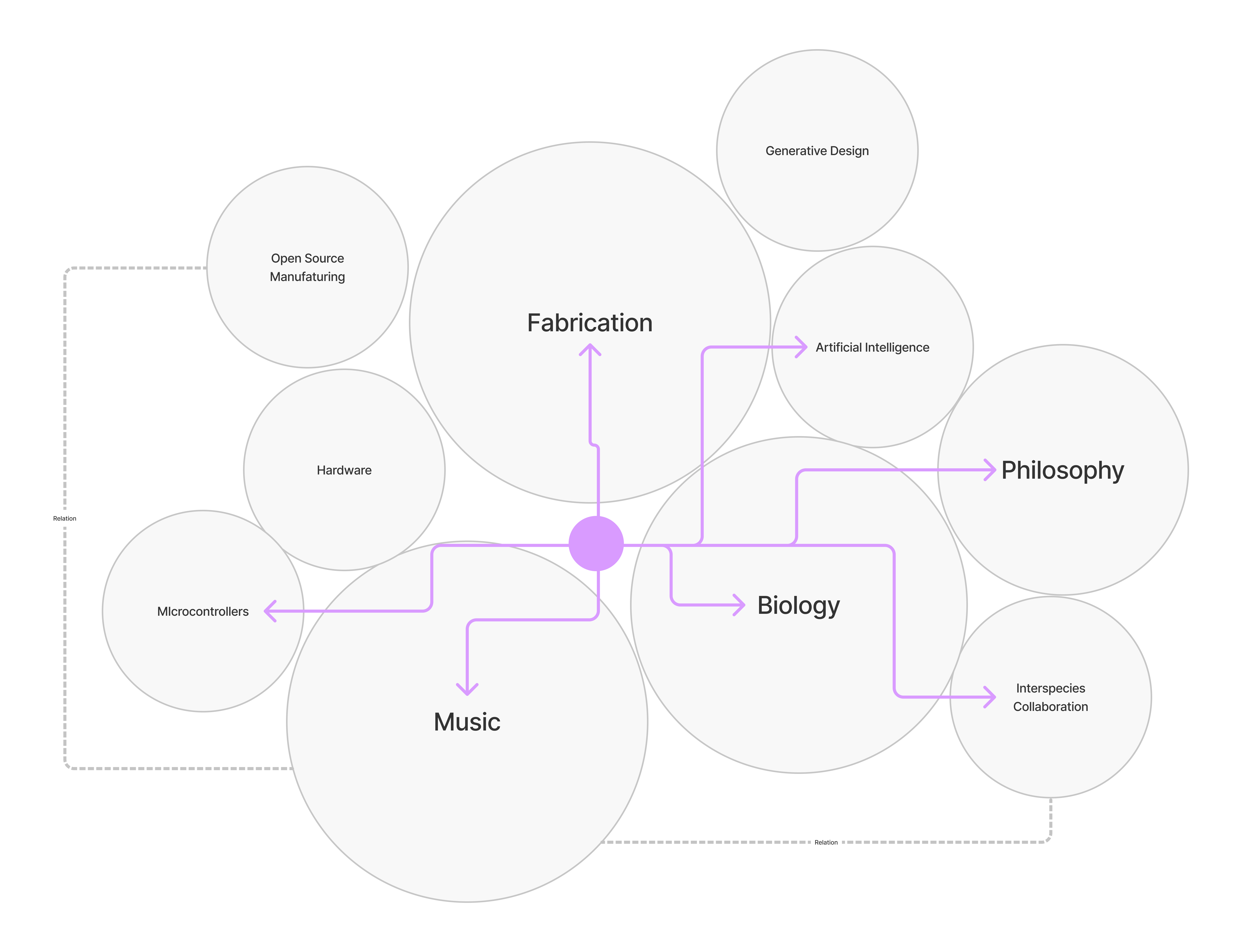Intro
After one month of term two, I am taking a inventory of my individual and collaborative projects. Instead of planning singular, stand-alone efforts with predetermined artifacts as interventions, I reframed the format of design interventions as snapshots of a work in progress, as an entry in the metaphorical design diary. This, I hope, will enable a different kind of working. Since I detached from wanting to produce fixed results with my projects, a process engrained in my thinking by a decade as a design professional, I hope to free me from solutionist thinking and let myself be led more by the process than anything else. This, of course, doesn't mean getting rid of making intentional design decisions or even strategic planning – it just emphasizes a playful exploration over it. Thus, I can fully embrace in practice what I came here to do in the first place: Experiment more.
This is why this intervention is indeed three interventions, a collaborative exploration with Tatjana on audiovisual storytelling, a joint effort with Joaquin into making open-source modular synthesizers a reality and finally, a solo intervention into the associative power behind Tarot cards and what they would look like reimagined by an AI network. While the latter is a finished project, at least in its first proof-of-concept, the other two are work in progress in the truest sense. No high-quality renders, no fancy video presentations, nothing but a snapshot of the experiments happening. Despite this fact, or specifically because of it, I think they are just equally critical investigations into the matters they are aimed at.
Reflection
Having three interventions to choose from, I think the most interesting to reflect on in the context of a first person design perspective is the Deep Tarot project. Not just because it is the 'most finished' one or the one offering the most mature documentation, it also offers a fixed conceptual framework to speculate with, in contrast to the other two interventions which will likely grow and shift in conceptual scope.
The alternative present created by Deep Tarot offers a provocative view into what might happen when we start treating AI algorithms as entities rather than tools. To me it is a thrilling exploration into understanding the way generative networks interpret abstract prompts, echoing our own associations and inspirations in ways that are perceived by humans as creative. It not only raised questions around the topic of creativity being something uniquely attributed to humans. In the particular context of Tarot cards it also plays with the notion of symbolism. In my intervention documentation I highlighted the particular implications of this interplay between culturally charged symbols, their complex co-relations and re-combinations, the algorithm as an interpreter and us as viewers, involuntarily provoking a recursive loop of associations in the process:
"So, what if we would rethink the motives and symbols shown on each card? Better yet, what if we let an image generation network reinterpret them? A ML-network (more precisely a GAN) can use the card title (e.g. 'The Magician') as a prompt to generate an image associated with it. Consequentially, the GAN would offer its own interpretation of what the card title means in the eyes of the algorithm. In other words, this means offering its very own set of associations with the meaning of the card. Ultimately, this provokes new creative connections in us as the observer, leading to a recursion of interpretations. Venturing into this recursive loop of creative associations was the goal of this project."
Updated Design Space
Mapping out my key interests and areas the projects venture into is crucial to understanding the relations, intersections and synergies between the topics themselves. Beyond sketching out a topology of co-related areas, it also visualizes several key stakeholders and people that inspired me. Through that, I am able to understand relations and future areas of collaborative investigation, both within and beyond the master program. It was inspired by Thomas Vivanco's remark comparing creative interdisciplinary exploration to organic mycelium growth. I thought this way of connecting various investigations and visualizing personal and professional growth was a very interesting approach. For simplicity and clarity I toned down the organic aspect in favor of organizing the information in a more accessible, schematic infographic. The spacial map below offers a look into what this could look like. It is subject to continuous iteration and expansion.

Updated design space showing areas of investigation, including key stakeholders (work in progress).
